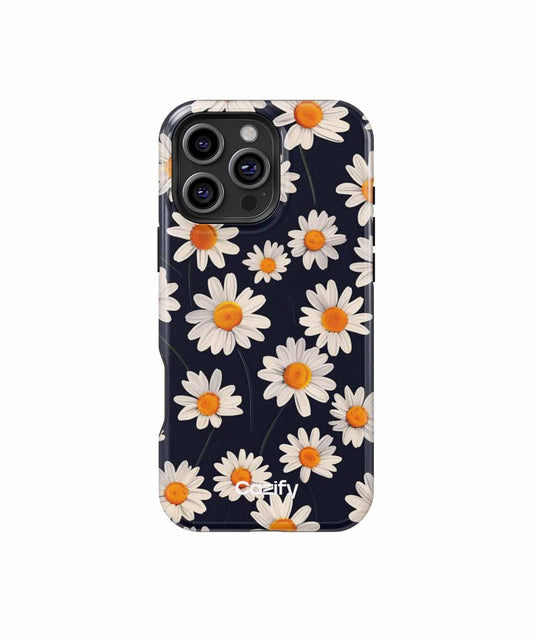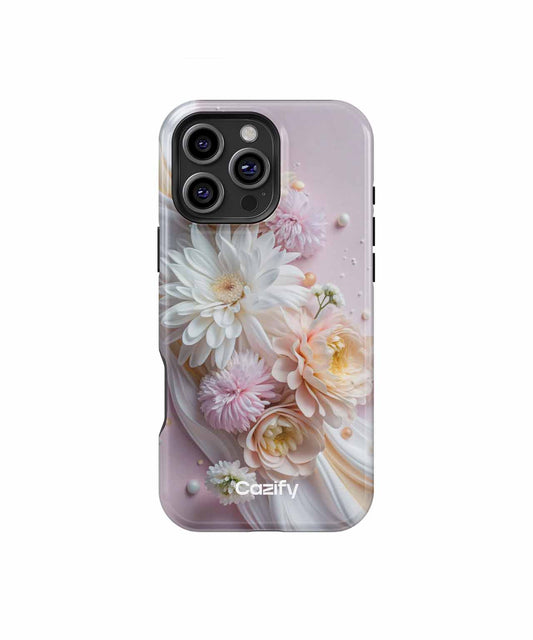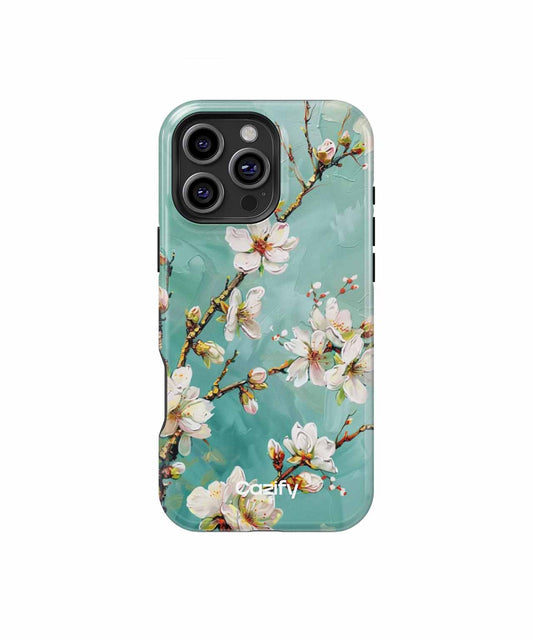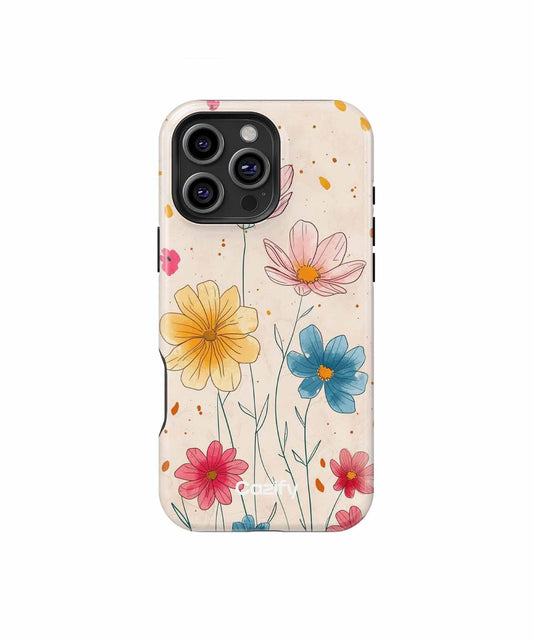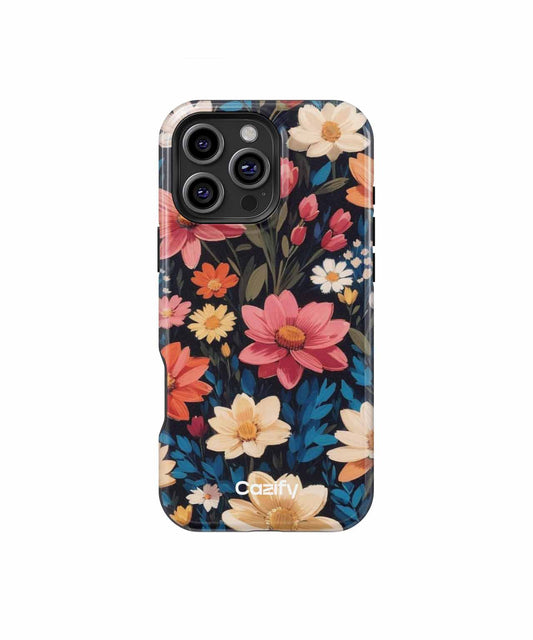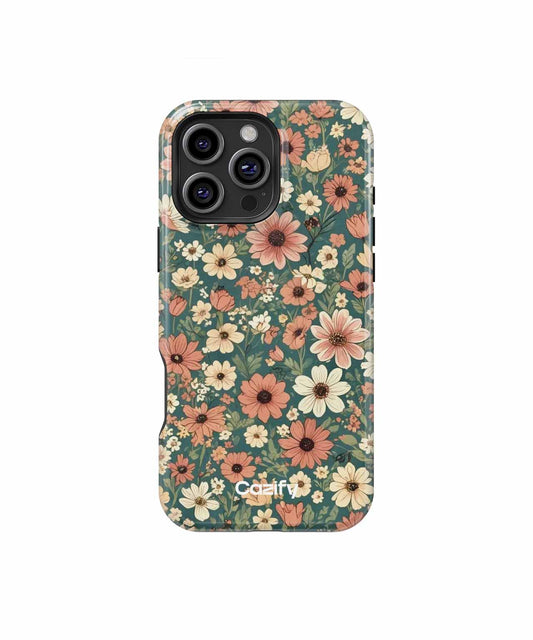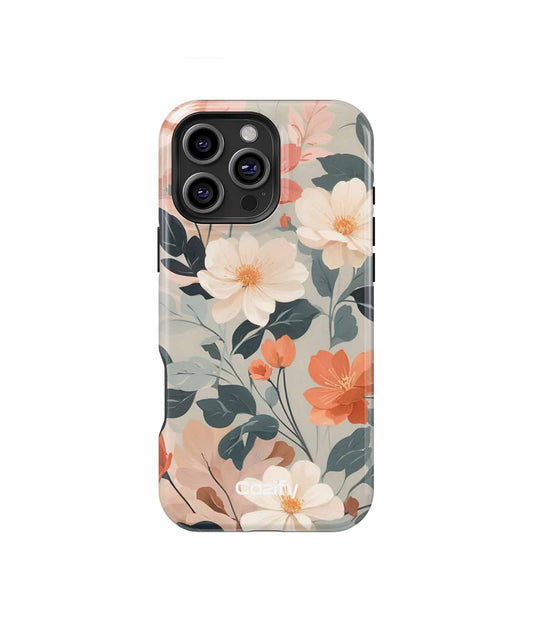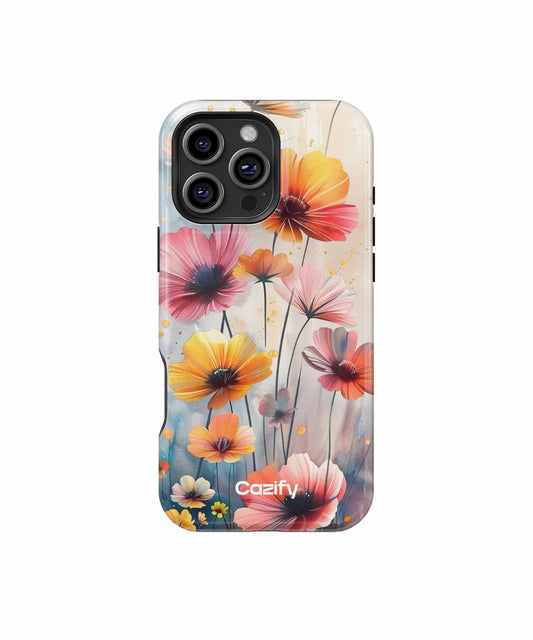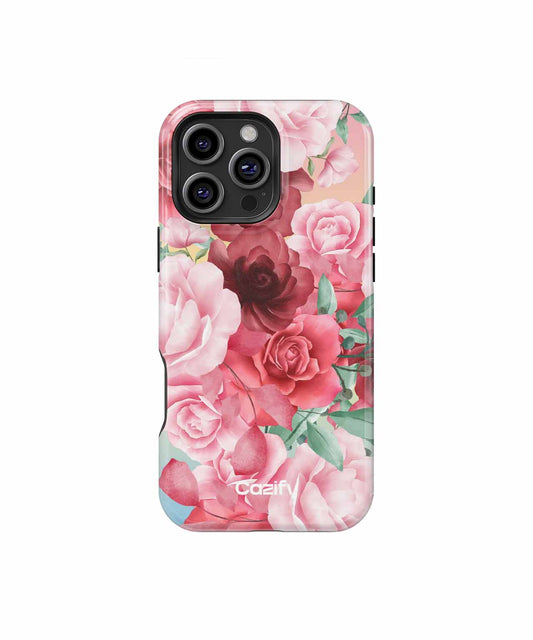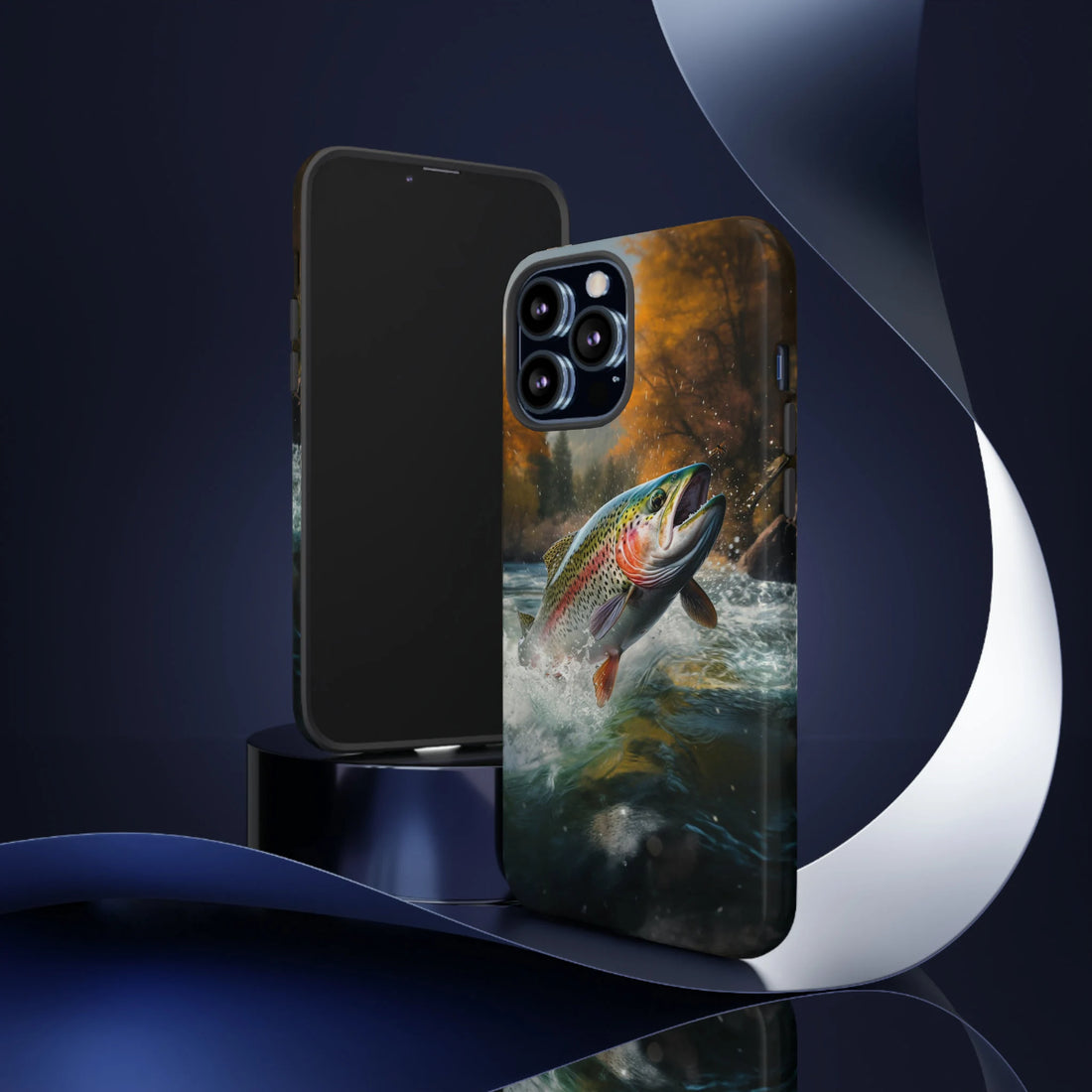
Everything You Should Know Before Buying an iPhone Case
Share
Introduction: Why Choosing the Right iPhone Case Matters
Owning an iPhone represents a significant investment, combining cutting-edge technology with premium design. Protecting this valuable device should be a top priority, yet many overlook the importance of selecting the right case. A well-chosen iPhone case not only safeguards the phone against physical damage but also enhances functionality and personal style.
The primary consideration is protection. iPhones face daily threats such as accidental drops, scratches, and impacts. A quality case acts as a defensive barrier, absorbing shock and reducing the risk of costly repairs. Without adequate protection, even a minor drop can lead to shattered glass or internal damage, potentially voiding warranties or leading to expensive replacements.
Beyond protection, a case also contributes to usability. Certain designs improve grip, minimizing the chance of slipping, while others offer features like built-in stands or cardholders. These multifunctional options can simplify daily life and add convenience. Furthermore, the growing variety of cases caters to a range of individual needs, from minimalist designs to rugged options suited for outdoor enthusiasts.
Material and design also play a crucial role. Cases made from durable materials like polycarbonate, silicone, or leather not only last longer but also provide varying levels of protection. For example, hard-shell cases might prioritize impact resistance, while softer options focus on scratch prevention. Additionally, compatibility with wireless charging or MagSafe accessories is another key factor worth considering when making a selection.
In terms of aesthetics, the right case allows users to express their personality and taste while complementing the sleek design of the phone. From colorful patterns to professional, understated looks, there is an abundance of choices to ensure that style remains uncompromised alongside functionality.
Choosing the right iPhone case is more than a superficial decision—it directly impacts the longevity, usability, and overall experience of owning an iPhone. Understanding these factors helps users make informed decisions that align with their needs and lifestyle.
Understanding the Types of iPhone Cases
When selecting an iPhone case, it is crucial to understand the different types available, as they can serve varying purposes and meet diverse needs. These cases are categorized by their material, design, and functionality, each offering specific benefits tailored to different usage styles.
1. Hard Plastic Cases
Hard plastic cases, often made from polycarbonate or similar materials, are lightweight and slim while offering moderate protection against scratches and minor impacts. These cases are widely popular for their availability in a range of designs, colors, and patterns. They are ideal for users prioritizing style over heavy-duty protection.
2. Silicone and TPU Cases
Silicone and thermoplastic polyurethane (TPU) cases are known for their flexibility and shock-absorbing properties. These cases provide a snug fit around the device and are resistant to minor drops. They are soft to the touch, making them comfortable to hold and suitable for everyday casual use.
3. Rugged and Heavy-Duty Cases
Rugged cases are engineered for maximum durability and protection. Constructed using shock-resistant materials like rubber, reinforced plastics, and multiple layers, they safeguard the phone from severe impacts, dust, and even water in some models. Persons working in demanding environments or those prone to accidents often prefer these cases.
4. Leather Cases
Leather cases exude elegance and sophistication. They are often lightweight and designed for aesthetics rather than high-level impact resistance. Genuine leather offers durability and develops a natural patina over time, appealing to individuals seeking a professional, polished look.
5. Wallet and Folio Cases
Wallet or folio cases combine practicality and phone protection. They feature compartments for storing credit cards, IDs, and cash, eliminating the need for a separate wallet. These cases often close with a magnetic flap, covering the front and back to provide a comprehensive safeguard.
6. Clear Cases
Clear cases prioritize showcasing the design of the iPhone while still offering basic protection. Made from transparent materials such as acrylic or TPU, they allow users to display the device’s original color and branding. These cases are popular among those who prefer a minimalist aesthetic.
With a wide range of options available, choosing the right type of iPhone case ultimately depends on personal needs, preferences, and lifestyle. Familiarity with the materials and functions of each type enables users to make an informed decision.
Key Features to Look for in an iPhone Case
When selecting an iPhone case, several key features should be evaluated to ensure the perfect balance between protection, functionality, and aesthetics. A thoughtful choice will safeguard the device while enhancing its user experience.
1. Material and Durability
Understanding the material is essential to determine durability. Common materials include silicone, TPU (thermoplastic polyurethane), polycarbonate, leather, and hard plastic. Silicone and TPU provide flexibility and shock absorption, while polycarbonate and hard plastic excel in impact resistance. Leather cases, while elegant, combine functionality and premium aesthetics but may offer less drop protection. The durability of the case also depends on how well the material withstands wear over time.
2. Drop Protection
Cases with military-grade standards or drop-test certifications ensure reliable protection against accidental drops. Look for cases featuring reinforced corners, shock-absorbent layers, or raised edges around the screen and camera. High-impact cases, including rugged or heavy-duty models, are ideal for those prone to mishandling their devices.
3. Design and Aesthetics
Design preferences differ from minimalist clear cases that showcase the phone’s original design to bold styles with intricate patterns or textures. A slim case provides a sleek look but may compromise protection, while bulkier models prioritize durability over aesthetics. Options exist for every taste, ensuring the balance between style and usability.
4. Grip and Handling
A case with a textured or anti-slip finish prevents accidental slippage, offering a secure grip. This is crucial for larger iPhone models, which can be harder to handle without added traction.
5. Compatibility
Cases must align perfectly with the device’s features. For instance, ensure the case does not hinder the functionality of ports, buttons, wireless charging, or MagSafe accessories. Poor compatibility may limit convenience and usability.
6. Additional Features
Many cases include extras such as kickstands for video viewing, card slots for storage, or antimicrobial coatings for hygiene. These add-ons cater to specific needs and enhance daily use.
Material Matters: Pros and Cons of Different Case Materials
When choosing an iPhone case, the material significantly impacts its durability, weight, design, and overall effectiveness. Each material comes with advantages and drawbacks suited to different needs and preferences.
1. Silicone and TPU (Thermoplastic Polyurethane)
- Pros:
- Offers excellent shock absorption, protecting the phone from accidental drops.
- Lightweight, flexible, and slim, making it easy to handle and pocket-friendly.
- Provides a non-slip grip, helping to prevent drops in the first place.
- Cons:
- Can attract dust and lint due to its slightly sticky texture.
- May yellow over time, especially on clear versions.
- Provides less scratch resistance compared to harder materials.
2. Polycarbonate (Hard Plastic)
- Pros:
- Strong and rigid, offering solid protection against heavy impacts.
- Resistant to scratches and wear, maintaining its appearance over time.
- Highly customizable, supporting a range of colors, patterns, and designs.
- Cons:
- Can feel bulkier and less comfortable to hold compared to softer materials.
- Prone to cracking or breaking under extreme pressure.
- Limited shock absorption, especially without additional features like rubber edges.
3. Leather
- Pros:
- Provides a premium, timeless aesthetic for a sophisticated look.
- Develops a natural patina over time, adding character and uniqueness.
- Comfortable to hold and less prone to slipping from hands.
- Cons:
- Typically more expensive than synthetic materials.
- Not as durable against drops and scratches, requiring more care.
- Susceptible to stains and water damage without proper treatments.
4. Metal
- Pros:
- Extremely durable, offering robust protection against impacts and shocks.
- Creates a sleek, modern appearance, adding a high-end feel to the device.
- Resistant to scratches and general wear.
- Cons:
- Heavier than other materials, making the phone less portable.
- Can interfere with wireless charging and signal strength in some cases.
- Prone to dents or deformation under force.
5. Hybrid Materials
- Pros:
- Combine the strengths of multiple materials, such as silicone for flexibility and polycarbonate for rigidity.
- Often designed for maximum protection, including military-grade drop performance.
- Tailored to balance durability, weight, and style.
- Cons:
- Higher price point compared to single-material cases.
- May feel bulkier due to the multi-layered construction.
- Limited aesthetic options relative to simpler designs.
Understanding the advantages and limitations of each material can help users make an informed choice based on their lifestyle, usage patterns, and personal preferences.
Protection vs. Aesthetics: Striking the Perfect Balance
When shopping for an iPhone case, achieving the ideal balance between protection and aesthetics can be a challenge. While some prioritize safeguarding their devices from accidental drops, scratches, and impacts, others gravitate toward sleek and stylish designs that reflect their personality. Understanding the key elements of both functionality and appearance is essential for making an informed decision.
Protection remains a top priority for many users, especially considering the cost of repairing or replacing an iPhone. Cases made from durable materials like thermoplastic polyurethane (TPU), polycarbonate, or silicone are widely favored for their resilience. Features such as raised edges to protect the screen and camera, shock-absorbing layers, and military-grade certifications offer peace of mind. However, these robust cases often tend to be bulkier, which may not appeal to users seeking a minimalist design.
Aesthetic considerations allow users to personalize their devices and complement their style. Slim and lightweight cases, often crafted from materials like hard plastics or leather, are designed with a focus on appearance. They come in various colors, patterns, and finishes, offering endless possibilities for customization. However, these cases often compromise durability, leaving the device vulnerable to significant drops or impacts.
To find the perfect balance, assessing individual needs is crucial. Those who frequently handle their phone in high-risk environments may lean toward heavy-duty cases with sleek designs incorporated. Conversely, users prioritizing style might opt for hybrid designs that combine a strong outer shell and a visually appealing surface. Exploring such options ensures that aesthetics do not come at the expense of protection, and vice versa.
Compatibility: Ensuring a Perfect Fit for Your iPhone Model
Selecting an iPhone case that is fully compatible with your device is critical to achieving both comprehensive protection and seamless functionality. The first step in determining compatibility involves identifying the exact iPhone model. Apple releases new models almost annually, and while many share similar dimensions, subtle differences in size, button placement, or camera configuration can affect how a case fits. To locate the model information, users can check the back of their device or navigate to Settings > General > About, where the model name and number are listed.
Compatibility doesn’t only refer to size; feature integration is another key consideration. Cases are designed to accommodate specific button layouts, speaker grilles, and charging ports unique to each iPhone model. A poorly matched case may obstruct physical buttons, mute switches, or Lightning ports, leading to functional inconveniences. Additionally, modern cases often support wireless charging and MagSafe functionality, but only if they align perfectly with the corresponding iPhone model.
It’s worth noting that cases for older models might not support newer technology. For instance, MagSafe-compatible cases include built-in magnets to align with the iPhone’s MagSafe system, a feature first introduced with the iPhone 12 series. Consumers purchasing these cases for a non-MagSafe-enabled model would not benefit from this functionality.
To avoid compatibility issues, buyers should cross-check product descriptions, review manufacturer specifications, and ensure the case explicitly states which iPhone models it supports. This practice will also help users avoid investing in cases that don’t meet their requirements. Moreover, retailers often provide lists or dropdown menus to facilitate case selection by model, making shopping more straightforward and ensuring a precise fit.
Exploring Additional Features: Kickstands, Wallets, and More
When selecting an iPhone case, it is worth considering additional features that go beyond basic protection. These enhancements can significantly improve functionality, convenience, and style, making the case a more versatile accessory.
Kickstands for Hands-Free Viewing
Kickstands are increasingly popular among users who consume media on their devices. A built-in or detachable kickstand enables hands-free viewing, ideal for watching videos, attending virtual meetings, or following recipes in the kitchen. Some kickstands offer adjustable angles for optimal comfort and visibility, while others are designed to fold seamlessly into the case for a sleek look. Metal kickstands may also double as magnetic mounts for use in vehicles or on workstations.
Wallet Cases: Functionality Meets Elegance
Wallet cases are a practical option for those looking to minimize clutter. These cases integrate card slots, ID compartments, and even small storage spaces for cash, effectively combining a wallet and phone case. Available in materials like leather, synthetic fabric, and vegan-friendly alternatives, wallet cases cater to various aesthetic preferences. Many designs also include secure closures, such as magnetic flaps, to prevent the loss of personal items. Users should note, however, that carrying cards with magnetic strips close to their phones may increase the risk of de-magnetization.
Additional Features for Customization
Other optional features include cases with detachable lanyards or wrist straps for added portability, particularly useful during travel or outdoor activities. For those who access their phones frequently, cases with built-in stylus holders or integrated battery packs offer an all-in-one solution. Meanwhile, rugged cases often include dust covers or clip holsters, appealing to individuals with physically demanding professions or on-the-go lifestyles.
By factoring in these supplementary elements, users can select an iPhone case tailored to their needs, ensuring both usability and protection.
Eco-Friendly Options: Sustainable iPhone Cases to Consider
When selecting an iPhone case, environmentally conscious consumers increasingly turn to sustainable materials and brands committed to reducing their ecological footprint. Eco-friendly iPhone cases are designed to offer durability, aesthetic appeal, and environmental responsibility without compromising device protection.
Biodegradable Materials
One notable trend in sustainable iPhone cases is the use of biodegradable materials. These cases are typically crafted from plant-based substances such as wheat straw, flax shive, or biopolymers like PBAT and PLA. They break down naturally under composting conditions, leaving minimal environmental impact. This option appeals to those seeking zero-waste solutions for their everyday accessories.
Recycled Plastics
Others prefer cases made from recycled plastics, such as old water bottles or fishing nets. Manufacturers process these discarded materials to create tough, stylish designs. By repurposing waste items that would otherwise contribute to pollution, recycled plastic cases help reduce the demand for virgin plastic production.
Cork and Bamboo
Natural materials like cork and bamboo also make excellent sustainable choices. Cork cases, derived from the bark of cork oak trees, are lightweight, shock-absorbent, and resistant to wear and tear. Bamboo is another renewable material frequently used due to its rapid growth rate and aesthetic versatility. These options blend environmental consideration with elegant design.
Brands Committed to Sustainability
Several brands lead the way in eco-friendly case production. Companies such as Pela, Nimble, and Casetify Earth Day Collection focus on providing high-quality, sustainable alternatives. These brands often include transparent information about their supply chain practices, offering additional assurance for buyers seeking ethical products.
Certifications to Look For
Shoppers should consider internationally recognized certifications like OEKO-TEX, FSC, and Cradle to Cradle to assess a product’s sustainability. These credentials validate the manufacturer’s environmental commitment and guarantee the safe usage of materials.
Transitioning to a sustainable iPhone case is more than a trend; it reflects a dedication to mindful purchasing and environmental stewardship.
Budget-Friendly Tips: Finding Quality Without Overspending
Purchasing an iPhone case doesn’t have to strain your wallet, and with a strategic approach, it is possible to achieve a balance between affordability and quality. One of the most effective methods is comparing prices across multiple retailers. Online marketplaces often run seasonal or flash sales, making it easier to find high-quality cases at discounted rates.
Shoppers should also be cautious about falling for branding alone. Generic or lesser-known brands often produce durable and functional cases at a fraction of the price of high-end manufacturers. Reading detailed reviews from trustworthy sources or customers can help identify affordable options without unnecessary compromises on design or protection.
Opting for multi-purpose iPhone cases can be another cost-effective strategy. For instance, wallet cases or cases with built-in kickstands eliminate the need for additional accessories. Additionally, minimalist or slim-profile cases are typically more affordable while still providing protection for everyday use.
Subscription services or loyalty programs offered by some retailers occasionally grant members access to special discounts or free shipping, which can reduce overall expenses. Keeping an eye on refurbished cases or open-box items from reliable vendors may also present opportunities for savings.
Materials play a significant role, too. TPU and silicone cases, for example, are not only cost-efficient but also provide reliable protection against minor drops and scratches. This is ideal for individuals prioritizing affordable practicality over premium materials such as leather or carbon fiber.
By being mindful of unnecessary frills and focusing on vital features such as durability and fit, buyers can confidently secure a budget-friendly iPhone case that fulfills both their needs and expectations.
Where to Buy: Online vs. In-Store Purchasing Tips
When selecting an iPhone case, buyers often face the decision of purchasing online or visiting a physical store. Each option comes with its unique advantages and considerations, which can significantly impact the purchasing experience.
Benefits of Online Shopping
- Wide Selection: Online platforms often provide access to a broader variety of iPhone case designs, materials, and brands compared to most physical stores.
- Convenience: Buyers can browse and purchase cases from the comfort of their homes, saving time and effort.
- Competitive Pricing: Online retailers frequently offer discounts, deals, and even free shipping options.
- Customer Reviews: Reading reviews from other buyers provides valuable insights into the durability and functionality of particular cases.
Challenges of Online Shopping
- Limited Hands-On Experience: Evaluating the texture, fit, and finish of a case isn’t possible until the product arrives.
- Shipping Times: Depending on the retailer, delivery can take several days or even weeks.
- Potential for Counterfeits: Unverified sellers on some platforms may offer low-quality or counterfeit products.
Benefits of In-Store Shopping
- Immediate Availability: Buyers can walk out with their chosen case the same day.
- Tactile Evaluation: Testing the case allows for a better understanding of its material and fit.
- Personal Assistance: Store staff can provide advice, clarify features, and make tailored recommendations.
Challenges of In-Store Shopping
- Limited Range: Most physical stores cannot match the inventory variety found online.
- Higher Prices: Due to operational costs, cases purchased in-store may be priced higher than their online counterparts.
- Potential Crowds: Shopping in-store can sometimes be time-consuming due to lines or crowded spaces.
When deciding between online and in-store shopping, buyers should weigh these factors against their preferences and priorities. Selecting the option that aligns with individual needs will ensure a smoother purchasing process.
Common Mistakes to Avoid When Buying an iPhone Case
Selecting an iPhone case might seem straightforward, but there are several pitfalls buyers should be mindful of when making their choice. Avoiding these common mistakes ensures the device remains well-protected and users get the most value for their purchase.
1. Overlooking Compatibility
One of the most frequent mistakes is purchasing a case that doesn’t fit the specific iPhone model. Apple regularly updates the dimensions and design of iPhone models, meaning cases designed for older or different versions may not align with cameras, buttons, or charging ports. Confirming the exact model before purchasing is essential.
2. Choosing Based on Appearance Alone
While aesthetics play a significant role for many buyers, prioritizing design over functionality can lead to problems. A case that looks attractive but provides minimal protection defeats the purpose, especially if it cannot protect against accidental drops or scratches. Think of appearance as secondary to durability and safety.
3. Ignoring Material Quality
Not all materials offer the same level of protection or longevity. For instance, cheap plastic cases may crack easily and fail to absorb shocks. Similarly, some materials age poorly, becoming discolored or brittle over time. It’s vital to assess the case’s material, such as silicone, TPU, leather, or hard plastic, to ensure it suits a buyer’s lifestyle and usage.
4. Neglecting Grip and Usability
A visually appealing case that is too slick can increase the likelihood of slipping from hands. Additionally, overly bulky cases might make the iPhone uncomfortable to handle. Buyers should check for features like textured surfaces or ergonomic designs to improve grip and overall usability.
5. Overlooking Protection Levels
Not all cases are designed equally when it comes to protection. For instance, a slim case may not offer sufficient cushioning for heavy drops. Buyers should avoid overlooking specifications like drop-test certifications, raised edges to protect the screen and camera, or shock-absorption features.
6. Skipping Reviews
Failing to read product reviews is another common misstep. Customer reviews offer insights into real-world durability, fit, and other crucial aspects that might not be evident from product descriptions alone. Skipping this step can lead to disappointing purchases.
By being mindful of these points, buyers can avoid costly mistakes and select iPhone cases that combine style, functionality, and durability effectively.
Maintenance and Care Tips for Prolonging Your Case’s Lifespan
An iPhone case serves as an essential tool for protecting your device, but regular maintenance is crucial to keep it intact and functional over time. Applying proper care techniques can prevent premature wear and ensure the case remains effective at safeguarding your phone.
Cleaning Your Case
Routine cleaning is vital to prevent dirt, grime, and oils from accumulating. The cleaning approach depends on the case material:
- Silicone or TPU Cases: Use warm water and mild soap. A soft cloth or toothbrush can help remove stains and residue without damaging the surface.
- Leather Cases: Apply a specialized leather cleaner or a damp microfiber cloth to avoid stripping the material’s natural oils. Follow up with a leather conditioner to maintain its flexibility and appearance.
- Hard Plastic or Polycarbonate Cases: Wipe with a damp cloth and soap if necessary, ensuring no water seeps into the crevices.
- Fabric Cases: Spot clean with a damp cloth and a mild detergent, avoiding excessive water exposure to preserve the fabric’s integrity.
Avoid Exposure to Extreme Conditions
High temperatures, direct sunlight, and moisture can degrade case materials over time. Avoid storing your case in areas prone to extreme conditions, such as in a hot car or a damp environment. Prolonged exposure can lead to discoloration, warping, or material breakdown.
Regular Inspection for Damage
Inspect your case periodically for cracks, peeling, or loose edges. Small damages can reduce the protective effectiveness. If any flaws are evident, consider replacing the case to maintain optimal device protection.
Proper Handling and Placement
Avoid over-stressing your case by frequently removing it or forcing it onto the phone. When detaching the case, work gently around the edges to prevent stretching or deformation. Additionally, avoid resting your phone on rough surfaces to minimize unnecessary wear.
Storing the Case Properly
If you decide to switch cases temporarily, store unused cases in a cool, dry place. Use a dust-free pouch or container to keep them clean. Ensure they are not stacked with heavy objects to prevent deformation.
By incorporating these care practices into a routine, cases can last longer while preserving their style and protective properties.
Conclusion: Making an Informed Purchase Decision
Selecting the right iPhone case requires careful consideration of several key factors to ensure the case meets both functional and aesthetic needs. Shoppers need to assess their lifestyle and usage habits to determine the level of protection necessary. A rugged case, for example, may appeal to individuals seeking maximum durability, while a slim, minimalist design may better suit those prioritizing portability and style. Personal habits, such as where the phone is frequently stored or how it is generally handled, play a vital role in this decision.
Examining the materials used in a case is critical to understanding the level of protection and longevity it offers. Silicone and TPU (thermoplastic polyurethane) cases often provide flexibility and shock absorption, while hard polycarbonate cases are designed for impact resistance. Premium materials like leather may appeal to those prioritizing aesthetics and professional appeal but may lack the same level of shock protection.
Compatibility is another cornerstone in the decision-making process. Choosing a case designed specifically for the iPhone model ensures proper alignment with buttons, ports, the camera, and wireless charging capabilities. Third-party cases, while widely available, should be cross-referenced with credible reviews to guarantee proper functionality and accuracy in fit.
The importance of reliable reviews and trusted retailers cannot be overstated. Genuine customer reviews highlight real-world performance, while counterfeit cases from unreliable sources may compromise the phone’s protection. Investing in trusted brands or cases certified by Apple’s “Made for iPhone” program can avoid compatibility and quality issues.
Finally, balancing budget considerations with desired features is essential. While premium options often provide superior performance and design, affordable options can meet basic needs. Buyers should weigh their priorities accordingly to confidently choose the most suitable iPhone case.

